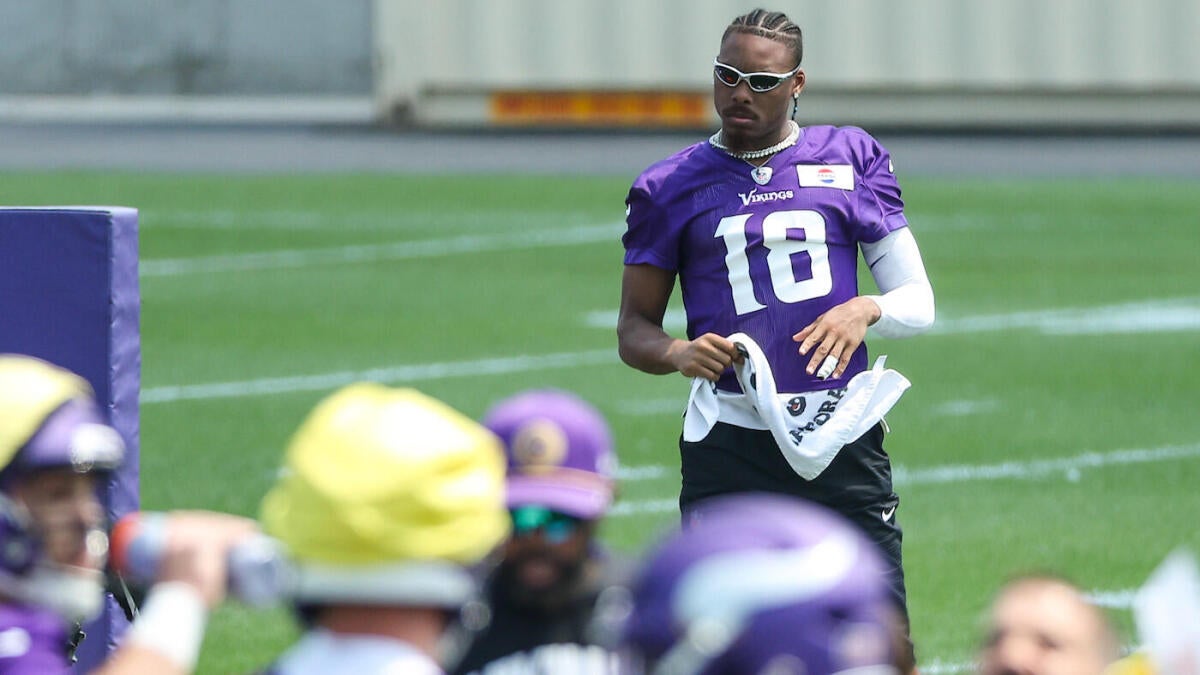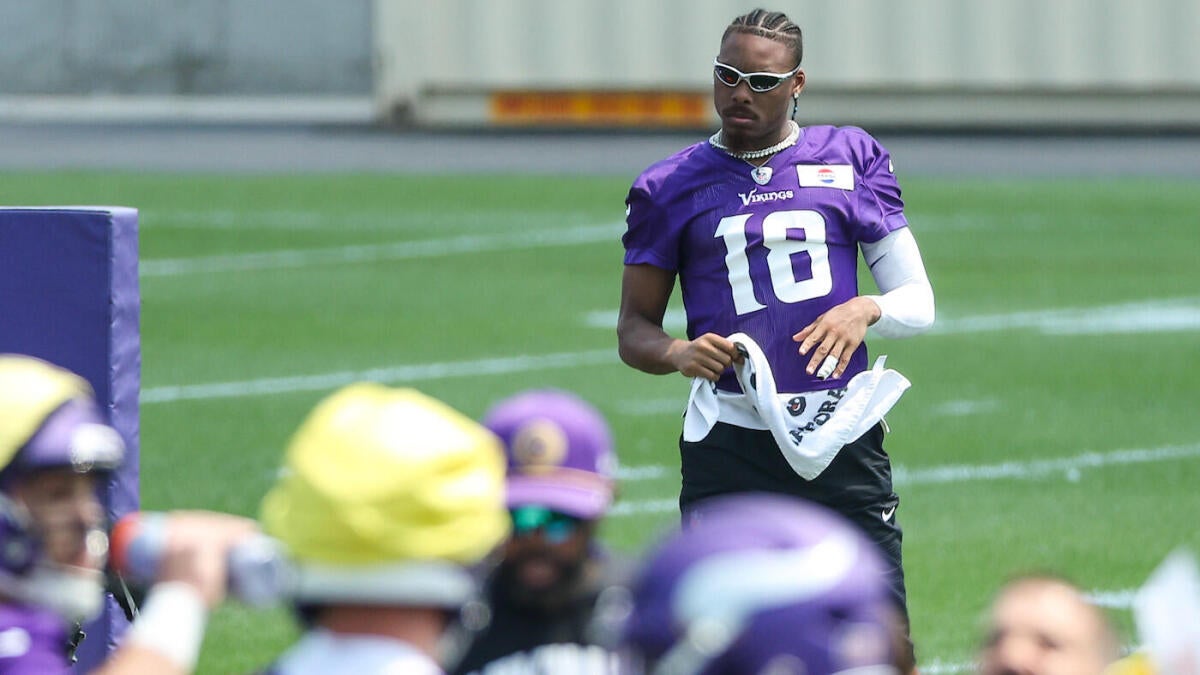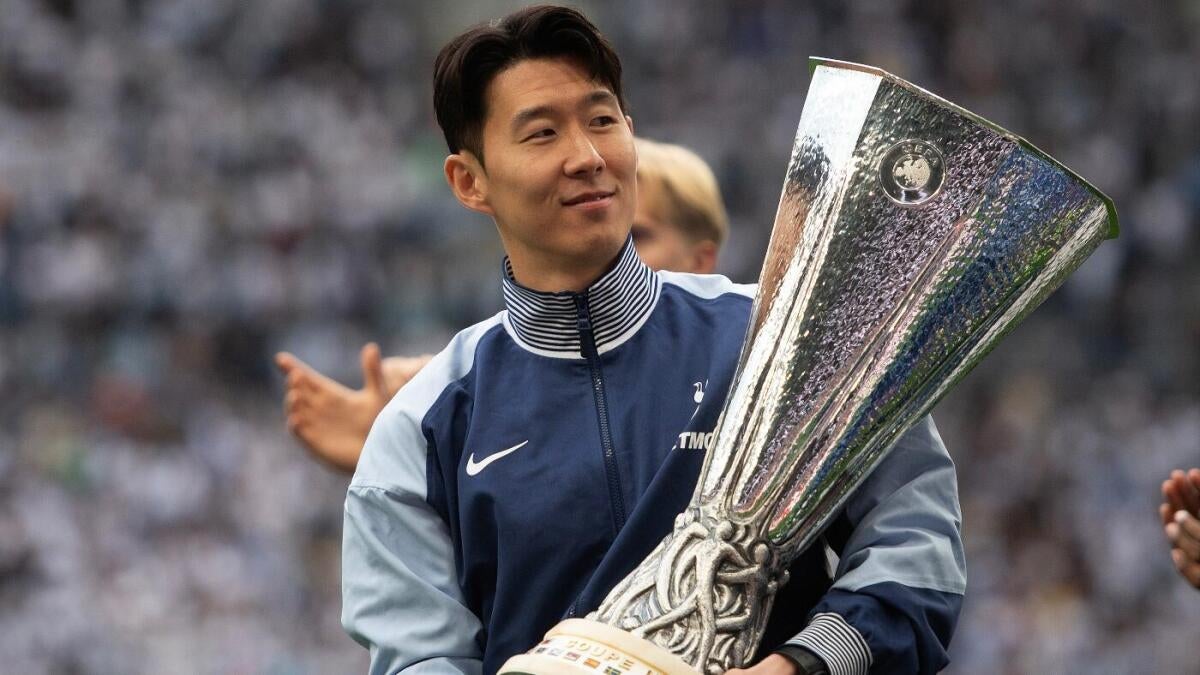The Fragile Balance: Navigating NFL Training Camp Injuries
Training camp is the crucible where NFL dreams are forged or shattered. It’s a high-stakes environment where rookies prove themselves, veterans refine their craft, and injuries can derail carefully constructed plans. As the 2025 season approaches, several key players find themselves on the injury report, casting shadows over their teams’ aspirations. The cases of Matthew Stafford, Joe Mixon, and Justin Jefferson highlight the delicate balance between optimism and concern that defines this critical period.
Matthew Stafford: The Rams’ Aging Quarterback Conundrum
The Los Angeles Rams’ Super Bowl LVI victory seems like a distant memory as they grapple with uncertainty surrounding their veteran quarterback. Matthew Stafford, entering his 17th NFL season at 37 years old, is battling back soreness that has kept him sidelined for a significant portion of training camp. Head coach Sean McVay’s initial “week-to-week” assessment has morphed into a prolonged absence, raising legitimate concerns about Stafford’s availability and effectiveness.
The Weight of History
Stafford’s history of playing through pain is well-documented. His toughness and willingness to endure physical discomfort have become legendary. However, back injuries present a unique challenge, particularly for a quarterback. The spine is the body’s central support structure, and any compromise to its integrity can have cascading effects on mobility, throwing mechanics, and overall performance.
The Offensive Ripple Effect
The Rams’ offense is meticulously designed around Stafford’s arm talent and quick decision-making. His ability to make rapid reads and deliver accurate throws is the foundation of their offensive strategy. If Stafford is limited or unavailable, the pressure shifts dramatically to his backup, who would need to quickly acclimate to the complex offensive scheme and build rapport with the receiving corps.
A significant drop-off in quarterback play would impact the entire offense. Defenses would be emboldened to focus on the run game, knowing that the passing attack lacks its usual dynamism. The Rams’ offensive rhythm, carefully cultivated over years, could be disrupted before it even has a chance to take flight.
The Panic Meter: A Cautious Optimism
While the Rams are projecting optimism, the reality is more nuanced. Stafford’s recurring back issues at his age warrant a high level of concern. His availability for Week 1 is genuinely in question, and even if he does play, his effectiveness could be compromised. The Rams’ Super Bowl aspirations hinge on Stafford’s health and performance, making this a critical juncture in their season.
Joe Mixon: The Texans’ Running Back Dilemma
After a significant offseason trade, Joe Mixon was poised to be a key cog in the Houston Texans’ revamped offense. However, a lingering foot injury has landed him on the non-football injury list and sidelined him for multiple weeks of training camp. The lack of clarity surrounding the injury’s nature and severity has added to the uncertainty.
The Running Back’s Achilles Heel
Foot injuries are particularly problematic for running backs. They directly impact a player’s ability to accelerate, change direction, and absorb contact—all crucial elements of a successful running game. Mixon’s ability to run between the tackles, catch passes out of the backfield, and contribute in pass protection was expected to be a vital asset for rookie quarterback C.J. Stroud and the Texans offense overall.
The Offensive Adjustments
Without Mixon, the Texans’ running game becomes significantly less dynamic and predictable. The offense would likely rely more heavily on the pass, potentially exposing Stroud to increased pressure. The lack of a reliable running game could also make it more difficult for the Texans to control the clock and manage game situations effectively.
The Panic Meter: A Cautious Approach
The Texans are hopeful for Mixon’s return, but the lack of clarity surrounding his injury and the potential impact on his performance warrant a cautious approach. The Texans’ offensive attack will be more predictable without Mixon, making it easier for defenses to key in on their weaknesses. The team’s ability to adapt and find alternative solutions will be crucial in the coming weeks.
Justin Jefferson: The Vikings’ Superstar in Limbo
Justin Jefferson, the Minnesota Vikings’ superstar wide receiver, is arguably the most explosive and dynamic player at his position in the entire NFL. Any potential injury to Jefferson sends shockwaves through the Vikings fanbase and opposing defenses alike. Early reports indicate that Jefferson is “dinged up,” raising concerns about his availability for Week 1.
The Wide Receiver’s Fragility
Details surrounding Jefferson’s injury are scarce. While the team has not disclosed the specific nature of the issue, any injury to a player of Jefferson’s caliber is a major concern. Wide receivers rely on their speed, agility, and explosiveness to create separation and make plays. Even a minor injury can hamper these abilities and limit their effectiveness on the field.
The Offensive Impact
Jefferson is the focal point of the Vikings’ passing attack. His ability to stretch the field, make contested catches, and generate yards after the catch makes him an invaluable asset. Without Jefferson, the Vikings’ offense becomes significantly less explosive and predictable. Defenses can focus their attention on other receivers and double-team Kirk Cousins, making it much more difficult for the Vikings to move the ball downfield.
The Panic Meter: A Wait-and-See Approach
The Vikings have been relatively tight-lipped about Jefferson’s injury, which could mean it is not very serious. Until more information is available, Vikings fans can breathe a little easier. However, the uncertainty surrounding Jefferson’s health adds an element of risk to the Vikings’ season.
The Ripple Effect: How Injuries Impact Team Dynamics
Injuries, especially to key players, create a ripple effect that extends far beyond the individual. They impact team morale, alter game plans, and force coaching staffs to make difficult decisions. Here are some general observations:
Morale Impact
Injuries can demoralize a team, especially if the injured player is a respected leader or a beloved teammate. It can create a sense of vulnerability and uncertainty, impacting the team’s overall confidence. The psychological aspect of injuries is often overlooked but can be just as significant as the physical impact.
Game Plan Adjustments
When a key player is sidelined, coaching staffs must scramble to adjust their game plans. This may involve simplifying the offense, relying more heavily on the run game, or implementing creative schemes to compensate for the missing player. The ability to adapt quickly and effectively is crucial in these situations.
Opportunity for Others
Injuries can also create opportunities for other players to step up and prove their worth. Backup quarterbacks, wide receivers, and running backs may get a chance to showcase their talent and earn a larger role on the team. The NFL is a league of opportunities, and injuries often provide the catalyst for unexpected breakthroughs.
Navigating the Injury Landscape: A Team Effort
In the high-stakes world of the NFL, managing injuries is a constant challenge. Teams employ a variety of strategies to mitigate the risk of injuries and ensure that their players are healthy and ready to perform.
Strength and Conditioning
Rigorous strength and conditioning programs are designed to improve players’ physical fitness, build muscle strength, and enhance their overall durability. These programs are tailored to each player’s specific needs and are constantly adjusted to prevent overuse injuries and ensure optimal performance.
Sports Medicine
Teams employ a team of sports medicine professionals, including doctors, athletic trainers, and physical therapists, to provide comprehensive medical care to their players. These professionals work closely with the coaching staff to monitor players’ health, treat injuries, and develop rehabilitation programs.
Rest and Recovery
Adequate rest and recovery are essential for preventing injuries and allowing players’ bodies to heal. Teams incorporate rest days, massage therapy, and other recovery modalities into their training schedules. The emphasis on recovery is a relatively recent development in the NFL, but it has proven to be a crucial component of player health and longevity.
Conclusion: A Season Defined by Resilience
As training camp progresses and the regular season draws near, the health of key players will continue to be a major storyline. The ability of teams to navigate the injury landscape, adapt to unforeseen circumstances, and maintain a positive attitude will be crucial for success. The teams that can effectively manage injuries and foster a culture of resilience will be the ones that ultimately contend for a Super Bowl title.
The early injury concerns surrounding Stafford, Mixon, and Jefferson serve as a stark reminder of the fragility of even the most meticulously planned NFL seasons. The true test will be how these players recover and how their teams adapt in the face of adversity. The NFL is a league of resilience, and the teams that can weather the storm of injuries will be the ones that emerge victorious. The journey to the Super Bowl is fraught with challenges, and injuries are just one of the many obstacles that teams must overcome. The ability to adapt, innovate, and persevere in the face of adversity is what separates the contenders from the pretenders. As the 2025 season unfolds, the teams that can navigate the injury landscape with grace and determination will be the ones that ultimately hoist the Lombardi Trophy.












